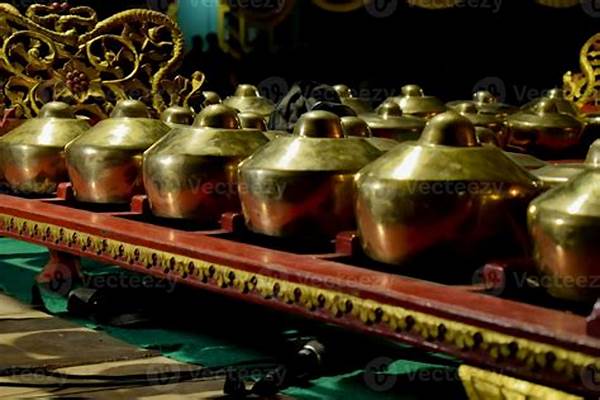Amidst the vibrant tapestry of Indonesian culture, there exists a jewel awaiting discovery by the global audience: the bonang. This traditional musical instrument, nestled within the gamelan orchestra, is not only a sound-making tool but a cultural beacon resonating through centuries, representing Indonesia’s rich musical heritage. Picture a seamless blend of melody and rhythm, embodying the spirit of togetherness and storytelling; such is the essence of the bonang’s layered sound textures.
Read More : Must-have Instruments In Automotive Diagnostics
But why, you may ask, is this particular instrument so special in the diverse world of traditional music? The unique selling point of the bonang lies in its intricate construction and role in creating musical depth. It is an instrument with duality—both simple and sophisticated—echoing melodies that transcend the mundane, invoking an emotional and intellectual response in listeners. Whether you’re an ardent music lover or a casual listener, the bonang beckons a desire to explore deeper into its realm, offering an exclusive auditory experience unlike any other. Ready for an enchanting sonic journey? Let’s delve deeper into the magic of the bonang.
The Artistry of Indonesia’s Bonang
When it comes to the bonang, its artistry lies in its ability to deliver multi-layered sound textures that captivate audiences. But what exactly makes this instrument a focal point of intrigue and admiration? To understand this, one needs to delve into the crafting and playing technique of the bonang, aspects that are skillfully woven together to produce an unparalleled auditory experience.
Understanding the Construction
The bonang is typically crafted from bronze or brass, with its construction resembling a set of small gongs placed horizontally. This construction is not merely aesthetic but functional, as each gong is meticulously tuned to produce specific pitches. The artist strikes the gongs with mallets, weaving a tapestry of sound that complements the fuller gamelan ensemble. This layered technique results in a melodious cascade that can either stand alone in its brilliance or merge seamlessly with other instruments.
Cultural Significance and History
Delving into its history, the bonang is more than just a musical instrument; it’s a testament to Indonesia’s rich cultural legacy. Originating from Java and Bali, the bonang has been an integral part of traditional ceremonies and artistic expressions for centuries. It embodies a fusion of spiritual and social elements, often played during cultural events that celebrate important societal values.
Bonang: The Sound Architect of Gamelan
The bonang, with its unique melody and rhythm, acts as a sound architect within the gamelan ensemble. Its ability to create layered sound textures plays a significant role in defining the overall sonic character of traditional Indonesian music.
The Role in Gamelan Music
In a gamelan orchestra, the bonang takes on a pivotal role. It often serves as the ensemble’s melodic leader, underpinning the harmony and directing the flow of the composition. Its interplay with other instruments is an exercise in rhythmic precision and dynamic music-making, showcasing the bonang’s versatility in driving melodic narratives.
Emotional and Intellectural Connection
Listening to the bonang isn’t just an auditory experience; it’s an emotional journey. The rich harmonics and resonant tones create a meditative state, offering listeners a chance to connect on a deeper, more introspective level. This makes the bonang not just a musical instrument but a tool for emotional exploration and intellectual stimulation, inviting audiences to lose themselves in its intoxicating soundscapes.
Exploring the Modern-Day Appeal
As traditional music faces the challenges of contemporary relevance, the bonang stands out for its ability to bridge generations. It seamlessly integrates into modern musical compositions, finding a place in fusion, jazz, and even electronic music.
Read More : Rare String Instruments Found Only In Several Regions Of Indonesia
Fusion and Innovation
Today’s musicians are increasingly drawn to the bonang’s distinctive tones, incorporating its sounds into genres that transcend cultural boundaries. This innovation creates a fusion of past and present, where classical meets contemporary. By doing so, the bonang ensures its place in the future of world music, sparking an appreciation for traditional sounds within modern frameworks.
The Call to Experience
If you’ve yet to experience the magic of the bonang, now’s the time to dive into this captivating world of sound. Whether you’re attending a local cultural festival or exploring music online, look for opportunities to witness the bonang in action. Let its layered sound textures envelop you in a narrative that is uniquely Indonesian, yet universally resonant.
Discovering the Depths: Bonang’s Sound Layers
Embrace the opportunity to explore the realms that the bonang opens up. Whether you’re a music enthusiast, a cultural aficionado, or someone in search of something new, the bonang offers a hidden world ready to be discovered. Dive into its immersive soundscape, and let the beauty of Indonesia’s traditional music captivate your senses.
Conclusion: Bonang’s Continuing Legacy
In summarizing the journey through the world of the bonang, it’s clear that this instrument isn’t just a piece of wood and metal; it’s a storyteller, a cultural ambassador, and an emotional connector. The bonang’s ability to create layered sound textures is a testament to its enduring appeal and significance in both traditional and modern music landscapes.
For the uninitiated, discovering the bonang can be akin to finding a key that unlocks a hidden door to Indonesia’s musical heart. Its sound carries with it a legacy, not just of technique and tradition, but of human connection and artistic expression. As you explore the bonang and its layered sound textures, may you find yourself more deeply connected to a musical narrative that is timeless, transcendent, and universally resonant.
